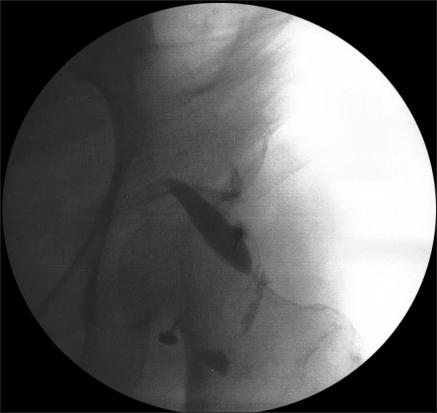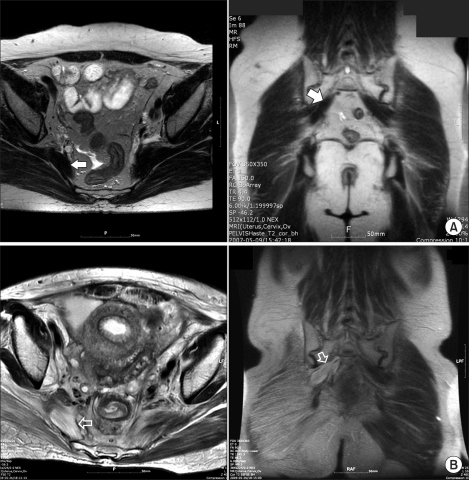Korean J Pain.
2010 Mar;23(1):88-91.
Post-radiation Piriformis Syndrome in a Cervical Cancer Patient: A Case Report
- Affiliations
-
- 1Department of Anesthesiology and Pain Medicine, The Catholic University of Korea College of Medicine, Seoul, Korea. chsung@catholic.ac.kr
Abstract
- The piriformis syndrome is a condition allegedly attributable to compression of the sciatic nerve by the piriformis muscle. Recently, magnetic resonance neurography and electrophysiologic study have helped to diagnose piriformis syndrome. High dose radiotherapy could induce acute and delayed muscle damage. We had experienced piriformis syndrome with fatty atrophy of piriformis muscle after radiotherapy for recurrent cervical cancer.
Keyword
MeSH Terms
Figure
Reference
-
1. Kirschner JS, Foye PM, Cole JL. Piriformis syndrome, diagnosis and treatment. Muscle Nerve. 2009; 40:10–18. PMID: 19466717.
Article2. Rossi P, Cardinali P, Serrao M, Parisi L, Bianco F, De Bac S. Magnetic resonance imaging findings in piriformis syndrome: a case report. Arch Phys Med Rehabil. 2001; 82:519–521. PMID: 11295014.
Article3. Gillette EL, Mahler PA, Powers BE, Gillette SM, Vujaskovic Z. Late radiation injury to muscle and peripheral nerves. Int J Radiat Oncol Biol Phys. 1995; 31:1309–1318. PMID: 7713790.
Article4. Lewis AM, Layzer R, Engstrom JW, Barbaro NM, Chin CT. Magnetic resonance neurography in extraspinal sciatica. Arch Neurol. 2006; 63:1469–1472. PMID: 17030664.
Article5. Filler AG, Haynes J, Jordan SE, Prager J, Villablanca JP, Farahani K, et al. Sciatica of nondisc origin and piriformis syndrome: diagnosis by magnetic resonance neurography and interventional magnetic resonance imaging with outcome study of resulting treatment. J Neurosurg Spine. 2005; 2:99–115. PMID: 15739520.
Article6. Chang CW, Shieh SF, Li CM, Wu WT, Chang KF. Measurement of motor nerve conduction velocity of the sciatic nerve in patients with piriformis syndrome: a magnetic stimulation study. Arch Phys Med Rehabil. 2006; 87:1371–1375. PMID: 17023248.
Article7. Saphner T, Gallion HH, Van Nagell JR, Kryscio R, Patchell RA. Neurologic complications of cervical cancer. A review of 2261 cases. Cancer. 1989; 64:1147–1151. PMID: 2667751.
Article8. Kim JW, Lee PB, Park CD, Choi SJ, Choi JB, Moon JY. Ultrasound-guided sciatic nerve block for the treatment of radiation therapy induced sciatic neuritis: a case report. Korean J Pain. 2009; 22:186–190.
Article
- Full Text Links
- Actions
-
Cited
- CITED
-
- Close
- Share
- Similar articles
-
- Looking beyond Piriformis Syndrome: Is It Really the Piriformis?
- Piriformis syndrome: a case report
- Piriformis Syndrome: A Case Report
- Accessory Belly of the Piriformis Muscle as a Cause of Piriformis Syndrome: a Case Report with Magnetic Resonance Imaging and Magnetic Resonance Neurography Imaging Findings
- Gait Improvement after Botulinum Toxin Injection in a Patient with Piriformis Muscle Syndrome



